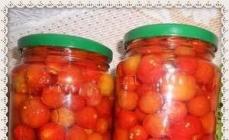World coffee prices reached the middle-aited maximum. Arabica was exposed to the appreciation to a greater extent. According to the observations of the Coffee expert, Chris Spears, many investors after the financial crisis turned away from traditional investments. And what is happening in the global coffee market is the result of the accumulation of speculative futures contracts. This is reflected in the prices of physical coffee, which is very sensitive to the conjuncture, various rumors and is therefore endowed with significant volatility.
The second factor that affected the rise in prices for coffee is that the manufacturers began to actively consume this product, which used to be only exported (saw mainly soluble). So the situation in Brazil and India, where the government program is being held, designed to make good local coffee more attractive to the population.
Also, the expert noted that the riots in the Middle East do not affect the coffee market, since the countries of this region participating in the supply of this Commodity today are relatively stable.
By the way, in 2009-2010 the agricultural year, the overall release of coffee in the world decreased from 128.1 million to 120.6 million bags. Due to the crawling coffee, according to experts, in the next few years, average prices for soluble and sublimated coffee will grow at a speed of about 10% per year, and on natural - 5% per year.
For reference:
The world's most popular is the Arabica variety, it is about 70% of all world production. It characterizes a saturated fragrance and a chocolate flavor with light sourness. The grains of the oblong shape, green with a longitudinal light groove. The content of caffeine in Arabica is low, about 1% - 1.7%. The historical origin of Arabica is from Ethiopia, but now on an industrial scale this variety is grown in Brazil, Colombia, India, Equatorial African countries and on the island of Sumatra. "Arabica" is very sensitive to weather conditions, various diseases and pests, which naturally affects the price, this variety in all respects is considered an aristocratic. In addition, many hybrid varieties based on "Arabica" (Typika, Bourbon, Colombian, Jamaici Blue Mountain, Mokko and others) have a variety of saturation with various flavors, from brandy, chocolate and nuts, from brandy, chocolate and walnut Wine and fruit.
Unlike "Arabica", "Robusta" is of greater resistance to climatic whims, has a rich fragrance, a saturated bitter taste and contains more caffeine - about 2% -4%. Its grains are more rounded and smaller in size than the Arabica. Yes, and the age of cultivation of this variety is much younger, about 150 years. The largest producer of "Robusta" is Vietnam, in addition, this variety is grown in Cameroon, Zaire, Uganda. "Robusta" is the main raw material for manufacture soluble coffee and cappuccino.
Coffee market in March 2011
- The number of single visits increased, people became less likely to walk by companies.
- It is also obvious to switch people from expensive consumption to more affordable.
- Coffee shops are most popular people over 45 years old. But over the past year, the number of visits of the solvent part of the population increased - 35-45 years, which confirms the thesis about the coming to visit us from the restaurant segment. This is especially common in the regions where "chocolate" is considered expensive coffee houses. In Moscow, our coffee shops are popular both among young people (20-30 years old) and more adult people.
- We have become more in demand special offers. In particular, breakfasts and lunches at a fixed price. The share of batch offers for breakfast and lunch grew by 20-25%. But this happened not suddenly. We are quite conscious and have long started working in this direction - improve our batch suggestions for breakfast and lunch missions once a quarter. And every time we note that their popularity is growing. Of course, there is a risk that they will become so attractive that they minimize the remaining sales, but at the same time we meet the needs of people save, help them optimize costs. In the same "coffee house" we have a very budget offer - breakfast for 149 rubles.
- In today's crisis time wins Fast Food. Nevertheless, the coffee shop is quite attractive for guests with their available offers, honeycomb trade, all sorts of pleasant trifles.
Sales structure in our coffee shops
- Coffee is a permanent sales leader in "Chocolate". It is ordered in 61% of cases.
- In second place in popularity - main dishes. Their share is approximately 50%.
- Bakery products.
- Beverages.
- desserts
- Salads.
- Garniirs.
- Soups.
- Alcohol.
Guests want a personal approach
People want personalization, and this is a partly service. The high level of satisfaction is impossible without variability, especially among the younger generation - all of these X, Y, Z. They say: I want a porridge without salt or without sugar, on low-fat milk or cream. And if they do not get the desired, this place is closed for them.
I want breakfast at two o'clock in the afternoon, and I don't care that he had before noon.
Over time, the share of such people in business will grow greatly. We will notice it in a few years, but you need to focus on them now.
First of all, the menu - it should be 100% variable.
In the US, there are a long-time restaurant networks, where there are five basic products in the menu, but they can be turned off to the head. And another 10-15 options for what can be in addition to them or remove it. That is, the guest must be given the opportunity to make a personal order inside the dish.
Need an individual approach
To be in a trend, the institution should be aware of the individual preferences of its permanent guests. For example: You come, you identify you, know that you order you order, and say: how usually? From an operating point of view it is difficult. But this format will be more in demand than an assortment of 20 fixed dishes without the possibility of changing anything.
New pricing for increasing loyalty
Everything goes to the fact that pricing will be fundamentally different. Now it happens in the field of Internet and telecommunications. But restaurants will touch it sooner or later.
Suppose, we allocate the base package - some simple things that can be suspended free (for example, American), and food and desserts - in special fees.
Nevertheless struggle for the guest's loyalty! And the actual success of a business is determined by the number of re-purchases.
In different industries, the potential of repeated purchases is different. Some kind of industry can claim 80%, some kind of 20%. If in the coffee shop the number of re-purchases or the number of loyal guests at the level of 40%, then at the expense of the new pricing, you can raise the attendance ceiling by 20 percentage points. Because loyalty is satisfaction, and therefore constancy.
In order to imagine how a democratic restaurant's restaurant will look like, you need to listen to what experts in the field of restaurant technologies and designers say ambient.
Inevitable it seems to collapse culture fast food. If you take into account the latest trends, the rapid service institution usually will be ousted by democratic restaurants seeking to conquer the favor of a new generation - more picky, which strictly follows his health. You can call it a kind of karma for the fact that fast-service networks created at one time with American restaurants.
Experts believe that in the very near future, these democratic restaurants will arise. They will be something mean between the dining and traditional restaurants quick service. Also, considering the style, price level, food quality and service, they will be even more common and popular. One can only guess that it will be with such institutions over the next twenty-five years, but the latest trends cannot help any thoughts.
According to Jeremy Julian, Gary Stotko (Gary Stotko), also known as the guys from the restaurant business, there will be more computers and fewer people in the restaurants of the future. As heads of technology development companies for Custom Business Solutions, Inc. restaurants, Julian and Stotko try to convince restaurant owners that the modern era of digital technology inevitably puts them before choosing: or they will keep up with the times or lose their customers, and maybe at all All your business.
"Owners of restaurants are aware that if they do not apply technologies, they will have to raise prices," says Julian. According to Julian and Stotko, in order to adapt to wage policies, changes in culture, and technologies, restaurant owners must begin to apply modern digital instruments in their business, such as wearable gadgets, large data or multi-channel marketing. Thus, in the modern world of the chain of restaurants will be able to store a variety of information about each client, attending constantly in their digital life and studying their desires and needs.
Based on this output - as well as statistics, studying current trends using an environment designer and an illustrator artist, you can imagine how fast food restaurant will look in twenty-five years. Welcome to the visual tour!
Imaginary view of the future
In the yard 2040 year.
Millenniyala, who are known for their innovative ideas, are approaching the 50-year border; An environmentally conscious generation of Z is gradually inferior to the palm of championship to the generation of alpha - high school students and graduates of colleges, now the world of marketing is aimed at them. You are standing in front of a new democratic restaurant in your city, where they sell, for example, pasta or sandwiches. Your friend was already in this institution more than once, you follow him.
Once you go to the dining area through automatic doors, you see a combination of environmental awareness and modern design: walls made in view of plant materials, cork tables, bamboo counters, lamps work on solar panels. All this is beautifully emphasized with multi-colored LED lamps. You would be amazed if a million times did not see this shameless attempt to turn to the eco-tendencies of the Z generation in this kind of restaurants. From all sides, you hear scraps of conversations, vigorous melodies of classic hip-hop and unusual electronic signals - all the sounds are unobtrusively merged into the cavothony, all this creates a relaxing atmosphere.
Your friend gets a smart phone from his pocket (previously he was known as "phone") and removes the screen lock. "We are glad to see you again," the message comes to him. This is part of the loyalty program in which he takes part, as much as many others at this time. You look like and see a small black "beacon", he reads your friend's smartpad and delivers messages. "You got 10 points! Dial 50 more and you can get a free sandwich! "
Self-service terminals
Now you have to find loose places. You go to the far part of the restaurant, where the booths are located, and you see the self-service terminals to the right of themselves. They remind you of the distant 2010s, when due to continuous protests caused by wage policies in many fast food restaurants, such as McDonalds, had to establish self-service terminals.

You understand that the strange electronic signal you heard comes from the screens of terminals, where young people deftly make an order or pay the score.
A girl who is standing in front of one of the terminals is brings to the smart pad screen. "Thanks! Your account is paid! " Number 34 appears on the screen.
The girl passes by you and goes to the green wall covered with a moss, in which about 50 small offices are built. You will find out these automatic "cells" that were so popular in upgraded, fully automated restaurant networks about twenty years ago. The girl comes to the cell at the number "34" and hand touches the door-door. The door of the cell opens, and the girl takes the brown package.
Wearing gadgets
You finally chose a table in the long part of the hall. You already want to sit down, but he stops you: "This table is very dirty." You notice that the tabletop is covered with crumbs.
The friend holds a hand on the digital screen on the table surface, before that it was in standby mode. Then he presses the "Clear" button. In a matter of seconds, an employee appears, on his badge it is written "Jamie", he runs up to your table. Jamie "Armed" with an aluminum canister with a detergent and cloth. You ask the question, how long will the work of Jamie? After all, 90 percent of restaurants these days are already controlled by computer laboratories remotely, and the average number of their employees decreased to 3-5. You know that Jamie's work is one of the lowest and low-paid out of existing things - and remember how in high school you are your first job in the Fast Food restaurant in high school.
On the wrist Jamie you see a neon green bracelet. He vibrates and glows, while Jamie wipes a smartist. After a few seconds, the inscription "Table 7" lights up on the "smart" watches of the waiter. You thank Jamie, who is now in a hurry to wipe the table number 7 - wherever he is.
"What did you choose?" - Asks your friend by placing your smartpad on the table. Smartist "comes to life again": "With the return! Check out the recommendations based on your previous orders. "
You touch the surface of the table surface on your part to give the system to understand that your friend does not dine anyone. The screen is divided into two parts, and menu appears. You drive your finger over the surface of the table, studying the restaurant menu, which presents various types of organic paste from whole wheat varieties, freshly prepared sandwiches that are made of local products. You grin, because before the word "freshly prepared" meant "made by hand". Now the dish is preparing kitchen robots, repeating the recipes of famous chefs and created in order to reduce labor costs.

Studying nutritional properties And the composition of the dishes, you understand that the menu is adjusted under the vegetarian diet of your friend, so you are looking for a partition with the full menu. After a while you are ready to make an order.
"Select a Payment Method". Your other than a smart phone above the table. The menu disappears, new screens appear. Without much interest, you see how the leading news program lists the titles of topical topics. Noticing that you are bored, your friend spends his finger across the screen on the right left. There are questions from quiz. This time you spend on the screen, running the game like a sea battle.
Near the table, you notice the station to charge mobile devices running on the solar battery, and decide what time is it time to recharge your smartpad. You connect the device to a universal connector and continue to play.
Multichannel marketing
After 5 minutes, your game interrupts the message that the order is ready. On your side of the screen, the number 21 lights up. You approach the green wall and looking for a cell with your number.
In a small box lie your sandwich and drink. You click on the cell door, but it does not open. There is an inscription "Load our application and get $ 2 to your next order." Instead of clicking "No, thanks", you spend your smart phone above the screen and feel it vibrates, downloading the application. The door opens, you take a tray and return to the table. Over the next hour you enjoy dinner, answering questions in a quiz and listening to the sweet sounds of hip-hop and old good electronic music.
"Ready to go?" - asks you a friend, getting up because of the table. You approach the container for collecting and processing waste running on solar energy, and throw away the paper garbage.
When you leave the restaurant, you feel how your smartpad vibrates. "Did you like us? Please rate your lunch! " This is a message from the application you downloaded from the walls with cells. Most likely, the tracking beacon over the entrance recorded that you leave the restaurant. You put five stars, thank a friend and go home, not even guessing that this high-tech democratic restaurant is already planning your next visit - selecting your favorite dishes, entertainment, and not forgetting about your companion.
Coffee Mania
From 2006 to 2014, the demand for coffee was halved, and since 2000 in as many as 5 times. But once in the Russian Federation, coffee was built 8 times less than tea, but already last year the coffee beans were imported almost as much as tea - 124 thousand tons. If you measure in the money equivalent, imports of coffee amounted to - 17.3 billion rubles., Tea is 22 billion.
Rights and quantity, and quality. In 2013, the share of grain coffee rose to 40%. All over the world, soluble coffee drink little, as it is considered a product harmful. In rich countries, the share of soluble coffee is not more than 10%, in Italy and France 1%.
Why are the prices of grain coffee grow?
Coffee is grown in 65 countries. 70% of the world's crop provide-indonesia, Colombia, Ethiopia, Vietnam, Brazil. In 2014, G. In Brazil, the hottest season broke out, in connection with which the worst harvest in the last 50 years is expected. At the same time on coffee plantations in Costa Rica, El Salvador, Gvatmal in the summer pounced the mushroom pest, which destroyed up to a third of the landings. And in Inidia, the invasion of coffee beetles-stalks began. The price of coffee has influenced everything and immediately, so low prices in 2015 are not expected.
But the soluble drink in the price will remain stable. Powder or sublimated coffee consists of a cheap grade variety, plus to everything up to half the contents of cans - not natural coffee, but nutritional supplements. There is almost nothing to go up there.






